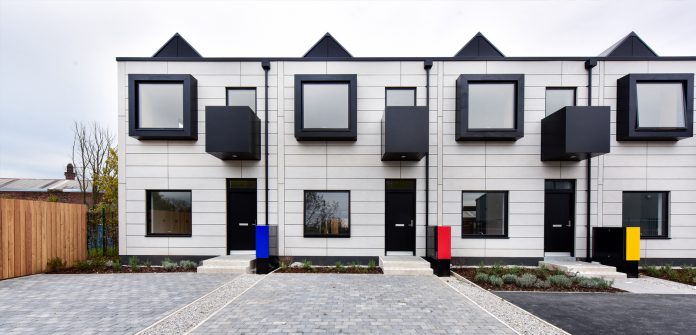CIRIA, working with its members, industry partners and Buildoffsite, is poised to start work on producing good practice guidance for quantifying the benefits of offsite construction. This guidance is needed now, it would seem, more than ever to encourage and accelerate its uptake into mainstream construction practices, says Kieran Tully
Offsite construction techniques have been with us for some time but its increased adoption is certainly seen as one way of addressing some of the challenges the construction industry faces. Poor productivity is one such challenge and is most clearly represented in the current housing shortage. High quality modular housebuilding is seen as a possible solution, once other obstacles are tackled such as planning.
Productivity, or lack of improved productivity, is an issue the industry has been challenged with addressing for years. The government, in partnership with industry, set out its strategy for change in Construction 2025 (July 2013) and since then great strides have been made towards realising the ambitions of the strategy, with offsite construction playing its part admirably well through better integrated supply chains and the use of digital technologies.
Most recently, the government has confirmed its commitment to industry through the £170m Construction Industry Sector Deal, with the objectives the same as originally set out in Construction 2025. Industry will play its part with a £250m contribution to the Sector Deal.
The policy from government is therefore clear and it is up to industry to not only rise to the challenge but to lead the transformation to improved productivity and the ambitions of Construction 2025.
CIRIA, in its role to improve the performance of the construction industry, is working with its members, other industry organisations and leadership groups to produce an industry guide that allows the benefits of offsite construction to be quantified.
The difficulty at present is that there is no independent industry standard methodology for assessing the benefits of offsite techniques against traditional construction practices. As a result, there is a reluctance to change from the tried and tested due to a lack of certainty.
Clear, demonstrable benefits to the client and end user are needed to drive change and allow clients to understand the risks, the benefits and make informed decisions.
Lowest construction capital cost is often a key driver in the decision-making process but what about the whole life cost? How does offsite construction fair with traditional construction costs and how is this assessed?
Most assessments are made through the client’s tender process on a case-by-case basis. This may not provide for an easy comparison between approaches on a particular scheme, identify all the possible benefits that are available or act as a record for future projects.
The client’s own procurement practice and supply chain should also be receptive to the potential case for offsite solutions; integrated and digitally enabled for best results.
Other benefits associated with offsite construction include better quality control and fewer defects on completion due to manufacture in a more controlled factory environment.
Shorter onsite construction programmes may be a sought-after benefit where there is the need to minimise disruption to existing operations, typified by railway, highway or airport infrastructure which run on a near 24/7 basis.
Modular construction aims to fix the scheme design at an early stage in the project to start the manufacturing process. There is little in the way of making fundamental changes to the design, whereas traditional build can remain as flexible for the client for as long as possible.
Some might see the fixing of the scheme design at an early stage as giving the project a degree of certainty and allow the project to move forward, whereas maintaining design flexibility keeps the project in the design phase.
The guide aims to highlight the differences between modular and traditional construction in an objective way throughout the design and construction lifecycle. Modular construction requires investment in Building Information Modelling (BIM) to integrate and test the design of work packages. Although this might mean more effort at an early stage, it can lead to a snag-free design and ultimately fewer snags on site.
A BIM approach using standardised structural grids also allows for a better comparison between options, eg concrete or steel frame. It also allows the client to better understand the whole life cost of the structure when BIM modelling is used from the start of the project.
CIRIA will provide a summary report of key metrics and a methodology to enable the comparison of benefits of offsite construction with more traditional techniques.
The project’s key objectives will be to:
- Identify common project drivers in more detail; approach to risk, innovation and procurement.
- Identify the benefits of offsite techniques against more traditional approaches by collecting data in a format that will enable comparison.
- Enable clients, designers, specifiers, contractors and others to quantify for themselves the benefits of offsite construction techniques when compared to typical construction approaches.
The guide will support a holistic, multi-disciplinary approach at an early stage of the design process with contributions across disciplines, eg structures, facades, mechanical and electrical, and public health.
The project’s data scope will cover a number of sectors, including housing, schools and hospitals, where repeatability of standard solutions can add value. The project started in February 2018 with a funders’ meeting to define the scope in more detail and publication is planned for spring 2019.
Kieran Tully BEng CEng MICE MIET
Associate Director
CIRIA
Tel: +44 (0) 20 7549 3300
Twitter: @ciriaupdates
Youtube: CIRIA News
LinkedIn: Ciria

















